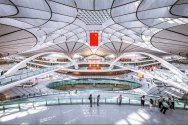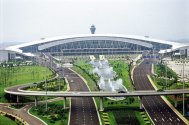I think that can still be achieved without giving barely 20% of airspace to civil aviation industry and causing such ridiculous delays which can be avoided. I think there are other reasons for this than you mentioned. Since i believe there are other ways they can avoid this happening without limiting civil aircafts from flying and encuring such economoc loses to the country from such long delays. Its ridiculous.They dont want aircraft to be the primary mode of medium range transport. From a geopolitical perspective this makes sense. You dont wanna rely on the Americans or the Europeans not banning servicing and repair parts for your aircraft and paralyzing a large amount of passenger traffic. (See Russia)
They can just for example limit the number of flights , after almost all China's major airlines are state controlled/state owned and so follow government rules/orders. So they can easily avoid what you mentioned without need for limiting airspace for civil aircrafts to such an extent.


